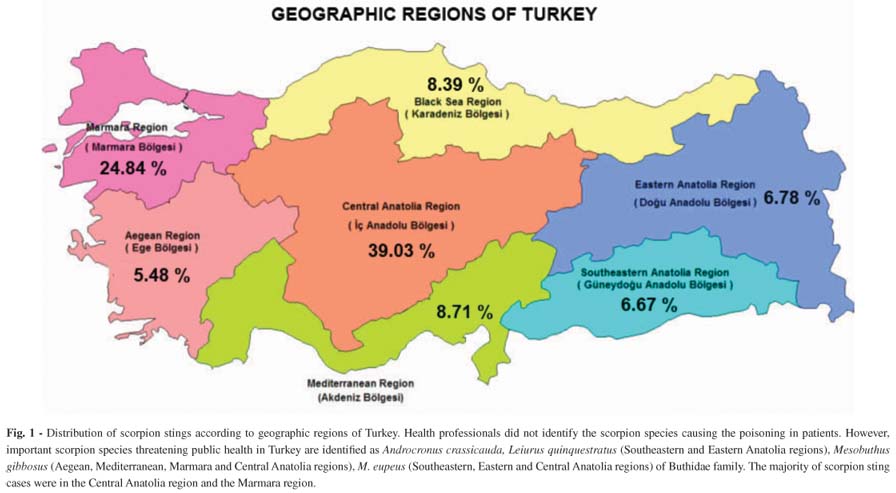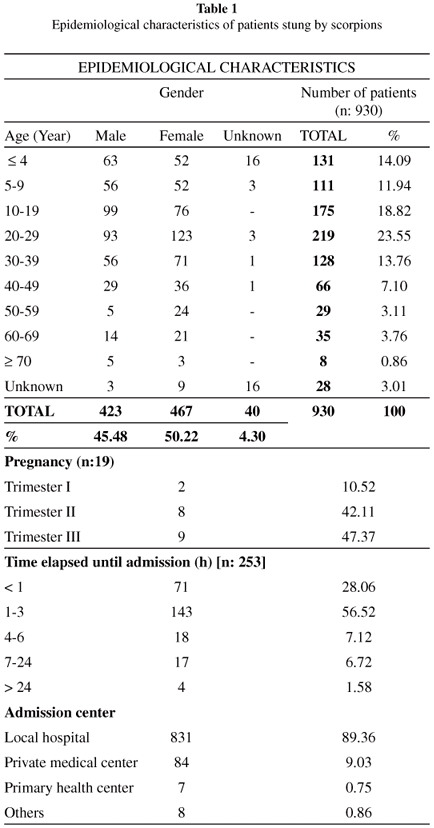The most important health-threatening scorpions found in Turkey are; Androctonus crassicauda, Leiurus quinquestriatus, Mesobuthus gibbosus and M. eupeus species, all of which belong to the Buthidae family. The epidemiological and clinical findings of scorpion stings in Turkey were evaluated between the years 1995 and 2004 based on data recorded in the National Poison Information Center (NPIC). A total of 930 cases were recorded. The cases mostly occurred in the month of July. The gender distribution was 50.22% female and 45.48% male. It was shown that the 20-29 age group presented more scorpion stings. Most of the stings occurred in Central Anatolia and Marmara regions of Turkey. Patients at the hospital showed signs of localized (pain, hyperemia, edema and numbness) and systemic effects (hyperthermia, nausea and vomiting, tachycardia, shivering and lethargy) but no lethality was notified. According to records, 33% of the poisoned patients were treated with antivenin in healthcare facilities.
Scorpion sting; Poisoning; Epidemiology; NPIC; Turkey




